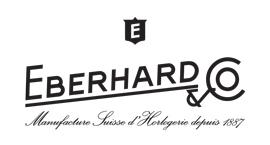Kristian Haagen: From the standpoint of a brand that can look back on 126 years in the field of Swiss watchmaking, what do you see as the biggest challenge facing watch companies today?
Mario Peserico: The biggest challenge today is globalization and the fact that most other brands belong to groups. This makes them very powerful and leaves less room for the independent brands. Of course Eberhard & Co are proud of being an independent watch brand and we want to preserve this. I am not complaining, merely reflecting. But the shop shelves only have limited space and since the groups represent five to 20 brands, it is naturally increasingly more difficult for us to make a mark. We produce approx. 16,000 watches a year in the niche range with an entry level of Euro 1,500 to 7,000 for steel watches and Euro 7,000 and upwards for our models in precious metals.

How do you communicate in this challenging environment?
We need to identify our watches as unique. Not only in advertising campaigns but through a the right product and marketing mix. We always try to develop watches different from those of our competitors and we actually patented an eight-day power reserve movement long before anyone else. The Chrono 4 is also a strong patent and with the introduction of this model we showed an innovative and new way of reading a chronograph. Our competitors are very ambassador driven, while we focus more on the product.
What does the ownership look like for Eberhard & Co today?
We are an independent watch company. Until 1969 it was owned by the original family, but taken over by investors and Palmiro Monti. Monti passed away in 2004 and today his daughter, Barbara Monti, is the CEO and owns the majority of Eberhard & Co.
Which market is the most important?
Europe was and is our main market, representing approx. 70 per cent of our annual sales. We opened in the US in 2001 and have great expectations to the American market with our new agent there. We rely on a good growth in terms of quality of presence, not in production numbers.
Talking growth, what are your immediate expectations?
We are facing a situation of unbalanced markets. We are very visible on the European markets as this is where our main sales are coming from. But the markets are currently slowing down and we are also challenged by the movement situation as we cannot expand our production due to the ETA (red: Swatch Group owned movement provider) regulations. So in terms of growth I don't think we'll be seeing more than five to 10 per cent natural growth.
What do the sales look like in terms of gender?
We can go back to 1910 where we launched our first ladies watch, but our roots lie in the chronograph which is naturally focused on a masculine clientele. That said, we offer a very feminine collection with the Gilda models. Not just a smaller version of the men's version but a truly feminine collection that differs completely from the masculine counterpart. We acknowledge that women buy their own watches today, whereas only a few years back these were given to them from their spouse.
Which model is the most iconic of your current collection?
The Chrono 4. This model was first launched in 2001 and offered a completely new way of reading a chronograph. You can easily recognize this model even at a distance. I should also mention the Extra-Fort Chronograph, as this is a model that was originally launched in 1940 and is still in the collection today.
Which model among this year's BaselWorld new releases do you find the most interesting?
It would have to be the new Chrono 4 Geant with the black DLC case. It is the first time we use this special DLC coating. This process means that we inject carbon into the case instead of using the more common PVD process, which is not at all as effective and durable as this new procedure.
What trends do you foresee for Swiss watchmaking in the coming years?
We are entering challenging times – especially for the lower segment. This is due to the “Swiss Made” restrictions. The new regulations will increase the production costs immensely, which will mean the end of some watch companies. Also, globalization means that we are seeing so much more of the same, no matter where in the world we are. With the new boutiques popping up everywhere, we sometimes do not even know what city we are in, as the boutiques all look the same, offering the same products no matter if they are located in Sao Paolo, Milan or Dubai. I think this is a bit sad. At least independent watch brands bring innovation and niche ideas to the market and hopefully the consumer will look to the smaller brands for new ideas and creativity.





